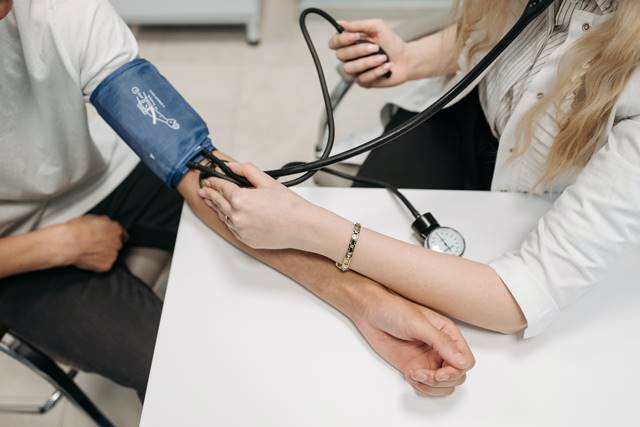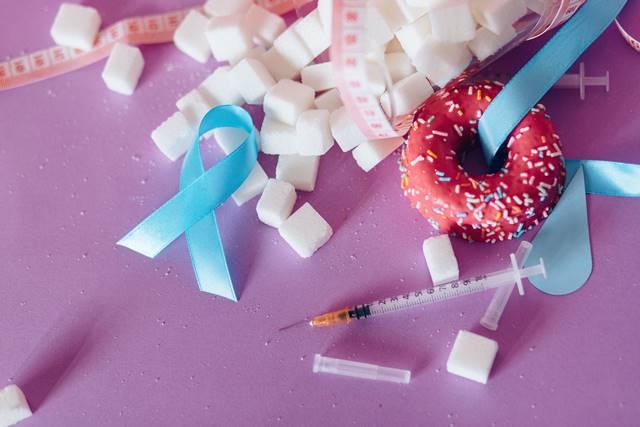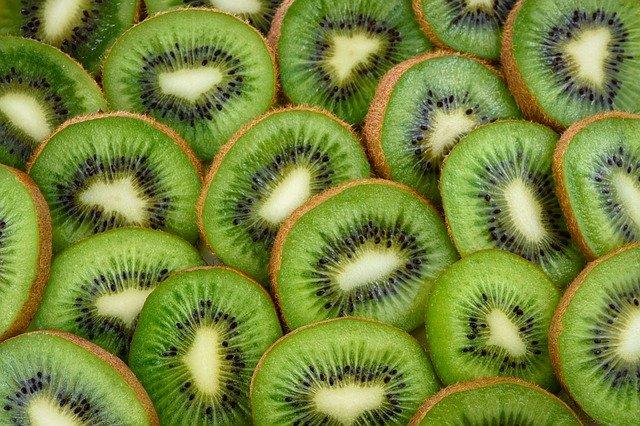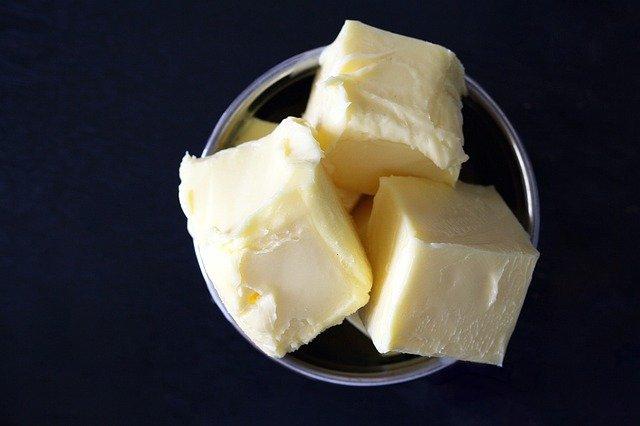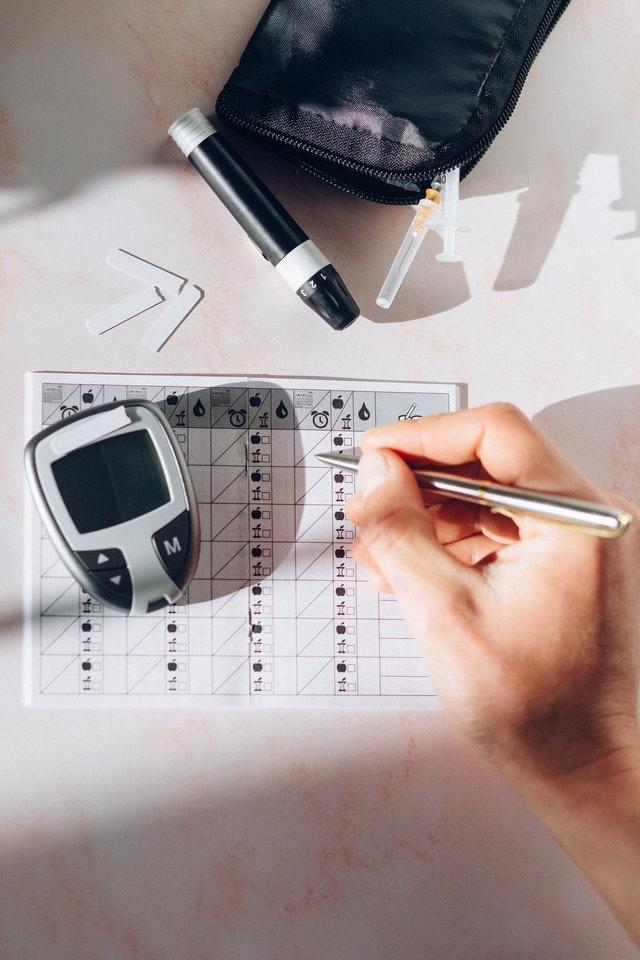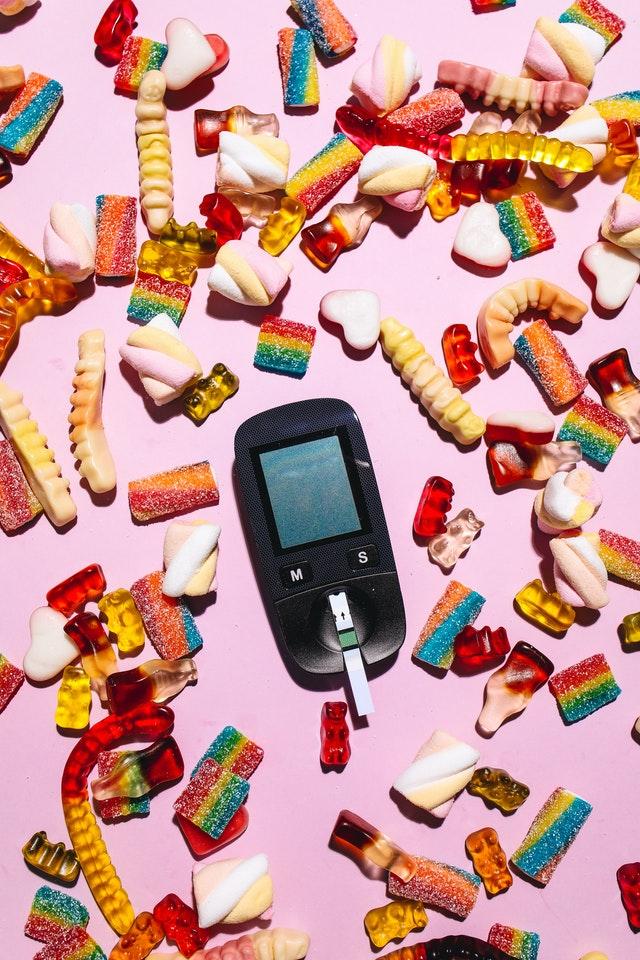Archive for May 2022

Can Blood Sugar Affect Blood Pressure?
Yes! Most definitely.
To understand the entire process and the associated traits, we must first understand what blood sugars are in the human body and their functions.
Also referred to as blood glucose, these constitute the significant sugars found in the bloodstream. They are usually the major energy sources within the human cells, among other sugars and molecules like ketone bodies.
Blood sugar levels are usually of utmost significance to individuals, given that too low levels could prompt varied health conditions, including hypoglycemia. At the same time, too high levels could lead to hyperglycemia and associated symptoms.
The human body is thus equipped with sensory cells all over capable of detecting changes in blood glucose levels and effecting subsequent changes. For instance, if the blood glucose level goes above the optimal levels, the condition will be detected in the pancreas prompting the release of insulin hormone, which, in conjunction with other hormones, rectifies the surge.
Similarly, pancreatic cells will also detect low blood glucose levels, prompting the release of glucagon and even catecholamine hormones that collectively work to fix the condition by increasing blood glucose levels. The healthy average blood glucose level thus typically ranges between 70 and 120 mg/dL.
Extreme blood glucose levels are usually associated with the different types of diabetes. However, to advance to the diabetes stage must imply that the blood glucose level detection system, the alpha and beta cells of the pancreatic islets of Langerhans, and the associated hormones are functionally impaired.
Hence, individuals with diabetes don’t often lose the ability to regulate blood sugar levels but rather the cells and systems involved.
How Your Body Regulates Blood Pressure
Despite near similar processes exploited in maintaining blood glucose and blood pressure levels, regulating blood pressure is often more complicated and critical. For instance, the body usually regulates blood glucose levels by making more blood sugars or exploiting alternative energy sources.
However, there is no way of making more or breaking down blood instantly within the body to regulate blood pressure. In fact, the body cannot make more or less ‘blood pressure’ like it does blood glucose. As such, blood glucose regulation is often much simple and achievable, unlike blood pressure regulation for the human body.
Take, for example, an individual with low blood pressure from low blood volume cannot instantly rectify their condition as more blood would be needed, something the body can’t manage to manufacture fast enough as it is with blood glucose. These individuals can suffer massive health implications like incapacitation and long-term brain and body harm. This hints at the severity and dangers associated with blood pressure imbalances.
Therefore, due to the limited blood pressure regulation options, the body often utilizes the hormones used in blood sugar regulation, catecholamine/adrenalin, and other hormones to facilitate the process. As such, if you have low blood pressure, the body detects this and releases catecholamines. These subsequently tighten up the blood vessels through vasoconstriction, making them narrower and thus more challenging for the heart to pump blood through the arteries, ultimately raising the blood pressure levels.
On the other hand, high blood pressure usually warrants reducing the arterial pressure build-up by lowering the overall blood volume in the vessels. This is often achieved through several avenues.
First, some of the blood glucose regulating hormones like insulin stimulate nitric oxide production by the endothelial cells, which initiates the vasodilation/expansion of the blood vessels. This subsequently reduces the arterial pressure and the pressure against the heart.
Expanded vessels also release water through diuresis in the kidneys, further lowering blood volume and thus blood pressure. These are just some of the few standard blood pressure regulation processes.
Similar to diabetics, imbalance in blood pressure prompts conditions like hypertension and hypotension. These individuals often can regulate their blood pressure but have impaired sensors and body systems responsible for controlling blood pressure levels.
How Blood Sugar Affects Blood Pressure
The blood sugar and blood pressure regulation systems are all interconnected, given that they depend on similar body hormones to affect changes in the body. For instance, as indicated above, insulin, a hormone responsible for regulating blood glucose, is also associated with stimulating nitric oxide production in blood vessels.
It usually blocks the body’s ability to make nitric oxide which is significant for vasodilation of blood vessels and decrease in blood pressure. As such, if an individual with diabetes is utilizing insulin doses to facilitate blood glucose regulation, they should be aware of the underlying risks of high blood pressure, given that the body’s ability to lower blood pressure via nitric oxide production would be severely impaired.
Catecholamine hormones that regulate low blood pressure would also impact blood sugars by immensely raising the levels given the interconnected responses.
The same goes for low blood sugar individuals whose body systems utilize catecholamines to regulate the levels, subsequently prompting high blood pressure levels. This is a clear indication of how low blood sugar or low blood pressure could influence the rise/decline of the other.
It is also important to note that some blood pressure and blood glucose regulation medications may override the body’s natural protection systems and trigger these processes.
Can Diabetes Cause High Blood Pressure?
Diabetes and high blood pressure (hypertension) often go hand in hand as individuals suffering from one are often likely to suffer from the other. An individual with diabetes is thus often twice as likely to have high blood pressure as opposed to healthy folks.
The high blood sugar levels among diabetes patients can also often damage blood vessels and nerves of the heart, and these, when coupled with high blood pressure and associated symptoms, often result in increased strain on the heart muscles and blood vessels. This further increases the risk of heart/cardiovascular disease and even stroke.

As such, diabetes and hypertension often occur comorbidly, either at the same time or simultaneously. This is usually evident among populations as nearly one in every three American adults have hypertension.
Subsequently, two out of every three patients with diabetes usually have high blood pressure or take respective blood pressure regulating prescription medications. Further reports also indicate that diabetes often doubles one’s likelihood of dying from stroke or heart disease compared to those without diabetes.
Experts in the field also believe that both the conditions, diabetes and high blood pressure, often have common potential causes and risk factors. They have thus been linked to;
- Oxidative stress
- Insulin resistance
- Inflammation
- Obesity
Essentially, diabetes is associated with elevated blood sugar levels. High glucose levels often stress the vessels causing damage, narrowing, and accumulation of plaque such as cholesterol and fats within the vessel walls. These plaques further narrow the vessels making it difficult to pass adequate blood through. As such, the heart has to pump even harder to compensate for the narrowing leading to high blood pressure throughout the body.
Subsequently, the plaque formation and build-up due to the blood sugar levels further causes atherosclerosis, a condition which, when coupled with the high blood pressure, increases the risk of heart attack, stroke, and peripheral arterial disease for the associated individual.
Does Sugar Raise Blood Pressure Quickly?
People commonly associate salt with high blood pressure despite sugar also often playing a crucial role in blood pressure regulation. For instance, eating too much sugar may often inhibit nitric oxide production, eliminating vasodilation. This leaves an opportunity for vasoconstriction, which can result in high blood pressure. As such, sugar, just like salt, is also among the leading causes of high blood pressure.
Take fructose, for example, a simple sugar, which, upon ingestion, raises uric acid levels in the blood. High uric acid concentrations often inhibit nitric oxide production, which further eliminates flexibility and vasodilation capabilities of the blood vessels, prompting a rise in blood pressure.
Subsequently, excessive sugar consumption often leads to weight gain, and continued weight gain results in obesity. Since obesity is a major contributing factor to high blood pressure, increased sugar consumption thus raises blood pressure above optimal levels.
Sugars, more so added sugars, like table sugar and syrup, used in food preparation and processing have also been realized to contribute significantly to hypertension. This is because they are usually more harmful to human bodies, unlike the naturally occurring sugars in fruits and milk. Therefore, increased amounts above recommended range could result in high blood pressure.
Furthermore, hyperinsulinemia, a condition depicted by higher-than-normal levels of insulin in the blood, also contributes to high blood pressure if left untreated. Studies have actually shown that nearly half of high blood pressure patients often suffer from hyperinsulinemia or glucose intolerance.
The body often uses glucose for energy. However, with insulin resistance, associated individual systems often fail to respond to insulin as they should, prompting overproduction of the hormone to compensate for the high blood glucose and low energy levels. High insulin is usually associated with hypertension and together greatly increases the risk of heart disease and diabetes.
Bottom line
Diabetes and high blood pressure are among some of the diseases claiming many lives globally. As such, individuals should always endorse frequent health checkups to determine their status with regard to the conditions. Subsequently, those living with either or both conditions should also invest in a close monitoring program to prevent treatment challenges and prevent unnecessary health complications.

What are the Best Fruits for Diabetes Type 2
Having diabetes type 2 changes everything. It stops you from enjoying the same things that everyone else takes for granted, like drinking a glass of wine or eating a piece of cake. And while there are many health benefits to taking care of yourself by avoiding sugar, your doctor might not be satisfied with just cutting out sugar and carbs.
If you struggle with processing sugars in your body just like so many people do, you might want to consider adding some fruits to help balance out your blood sugar levels. According to the American Diabetes Association, fruits contain fiber, vitamins, and minerals that can help you manage your diabetes levels. Here is their list of the best fruits for people with diabetes with type 2 and how they help:
1. Berries for a refreshing treat and disease-fighting antioxidants
Berries are a perfect snack for people with diabetes. Berries contain fiber and antioxidants, but they also pack a powerful punch of vitamins and minerals, including vitamin C, vitamin K, magnesium, and manganese. A cup of raspberries, blackberries, or blueberries contains about 6 grams of fiber, and it is recommended to have this amount of fiber each day. Berries are also very high in water content, making them hydrating for people with diabetes.
2. Tart cherries help fight inflammation
Tart cherries are among the best fruits for people with diabetes because they contain many anthocyanins. Anthocyanins have been shown to reduce inflammation by reducing cytokines and proteins that cause inflammation, preventing LDL cholesterol from oxidizing and inflaming blood vessels. Tart cherries also contain potassium, vitamin K, fiber, and magnesium, which all help manage blood sugar levels in your body.
3. Peaches for metabolism-boosting potassium
Peaches are a very healthy snack because they taste great and are loaded with vitamin C. Vitamin C also helps your body increase insulin sensitivity, preventing it from damaging sugar molecules. Peaches also have potassium, fiber, calcium, and manganese, which help your body manage blood sugar levels.
4. Apricots for a scrumptious, fiber-rich bite
Apricots are a great snack because they are full of fiber, vitamin C, potassium, and antioxidants. Fiber is essential for people with diabetes because it can help keep you feeling full and prevent sugar spikes in your body. Fiber also slows down digestion and keeps blood sugar levels balanced. A cup of apricots contains 7 grams of fiber which is a perfect amount to consume each day to improve your health.
5. Apples for a quick fibrous and vitamin C rich snack
Apples are an excellent snack for people with diabetes because they are high in vitamin C. Your body needs vitamin C to produce collagen, which helps keep your blood vessels healthy. Vitamin C also assists in insulin production and prevents oxidation of LDL cholesterol, which can cause damage to your blood vessels. A medium-sized apple contains 2 grams of fiber which is an excellent snack for people with diabetes.
6. Oranges for a juicy source of vitamin C
Oranges are an excellent snack for people with diabetes because they are high in vitamin C. Vitamin C helps your blood vessels remain healthy and prevents them from becoming inflamed. Vitamin C also assists in insulin production and prevents the oxidation of LDL cholesterol, which can cause damage to your blood vessels. Vitamin C makes oranges a great snack because it will help you fight inflammation and reduce the risk of heart disease.
7. Pears for easy snacking, vitamin K and fiber
Pears are an excellent snack for people with diabetes because they help prevent your body from inflaming. Vitamin K is a powerful antioxidant that helps regulate inflammation in your body.
If you are having trouble preventing inflammation, add pears to your diet to keep yourself feeling healthy and energetic. A cup of pears contains 5 grams of fiber, giving you a great slow-burning fuel source to keep your stomach feeling full and help control your blood sugar levels.
8. Zesty Green Kiwi for Potassium fiber and vitamin C
Zesty green Kiwis are an excellent snack for people with diabetes because they contain vitamin C, fiber, and potassium. Vitamin C helps prevent your blood vessels from becoming inflamed, which can cause oxidative damage, high blood pressure, and high cholesterol levels.
Fiber is essential for people with diabetes because it can help keep you feeling full and prevent sugar spikes in your body. Potassium is also necessary for your body because it helps regulate blood pressure and cholesterol levels and prevents diabetes from affecting you.
9. Plums for a healthy dose of fiber and manganese
Plums are an excellent choice for people with diabetes because they are high in fiber and vitamin C. Fiber is essential for people with diabetes because it can help keep you feeling full and prevent sugar spikes in your body. Plums also have vitamin K, magnesium, folate, potassium, and vitamin A. Plums are an excellent fuel source to keep you energized throughout the day.
10. Grapefruits for the antioxidant-rich and vitamin C
Grapefruits are an excellent choice for people with diabetes because they are high in antioxidants and vitamin C. Antioxidants help your body fight free radicals, which can cause damage to cells. Vitamin C is also essential for a healthy immune system, blood vessels, and muscles because it prevents the oxidation of LDL cholesterol, which can cause damage to your blood vessels.
Benefits of Fruits for Diabetics
Consumption of fiber helps keep your blood sugar levels under control and boost your metabolism. Fruits are not only energizing, but they are a good source of antioxidants, vitamins, and minerals that can help fight diseases and keep you healthy.
Fruits are low in calories, processed sugars, sodium, and saturated fats, making them a healthy alternative to junk food. Obesity contributes to diabetes type 2, so it is essential to control your calories and sugars.
Conclusion
Fruits are the perfect snack for people with type 2 diabetes because they can boost your metabolism, promote healthy blood sugar levels and fight diseases.
Fruits are tasty and have health benefits that can help lower your risk of type 2 diabetes. If you are having a hard time losing weight, just like so many people do, switching to a fruit snack could be the answer for you. Try fruits other than bananas and apples, such as blue, purple, and red fruits like berries with low sugar content.

What Kind of Pasta can a Diabetic Eat?
Pasta is synonymous with convenience, which can be a dirty word for nutrition. And if you have type 2 diabetes, you may have heard that you need to avoid this product. But if you love pasta and want to make a few changes to your cooking tips, you may not need to say goodbye to this paid dish.
Although pasta has more carbohydrates than some other foods, it can fit into a healthy diabetic meal plan. People with type 2 diabetes who ate 50 grams of pasta had lower blood sugar levels than those who ate equal portions of white bread, potatoes, or rice. You need to monitor your portion sizes and cook this dish carefully, like limiting certain toppings and additives.
Innovative steps like these can help keep your blood sugar levels, weight, general health, and nutrition on track. Diabetes educators share their strategies for making pasta as safe as possible for diabetes.
Make vegetables the star of your bowl.
To make onions safer for people with diabetes, add color—apart from vegetables with this peculiarity, focusing a pasta dish on naturally low-calorie non-starchy vegetables increases food intake and adds vitamins and minerals.
Non-starchy vegetables are very high in fiber and very low in carbohydrates, which means less impact on blood sugar levels. It’s a good idea to fill about half a plate or an onion with options like cabbage, watercress, collard greens, broccoli, spinach, carrots, asparagus, and cucumbers, or mushrooms.
Use whole-grain pasta
Replace traditional pasta with high-fiber noodles. Whole-grain pasta is the best because it contains more fiber, which can help ease high blood sugar. According to Bob’s Red Mill, many typical white kinds of pasta are made from semolina flour, which is caused by grinding a variety of wheat known as durum wheat. While semolina can be a nutritious flour, significantly, when it’s fortified with vitamins and minerals from whole-grain pasta, it has a slight advantage.
Try the vegan pasta
If you’re intolerant of wheat or want to reduce your pasta dish’s carbs, try making vegan pasta even more. If you don’t have a spiralizer or mandolin—which are both kitchen utensils used to manually spiral food into a spiral—you can use a vegetable peeler. Take the soaked vegetable slices and place them in boiling water for 20 seconds, then transfer the noodles to a bowl of ice.
As long as they’re not made with pumpkin or starchy sweet potatoes, vegan snails are the lowest-carb option. In addition, vegetarian pasta is usually lower in calories but still rich in vitamins and minerals.
One cup of boiled zucchini, for example, contains only 27 calories and 5 grams of carbs, while one cup of cooked whole-grain Barilla pasta has 180 calories and 39 grams of carbs. The same serving of zucchini contains 23.2 mg of vitamin C, making it an excellent source, and 476 mg of potassium, making it a good start. Sweet peppers, broccoli, carrots, and beets are other low-carb vegan pasta options.
Top off the creamy sauce with butter
As with other “white” foods, ditch the white sauce when preparing foods that increase diabetes. Traditional cream-based spices tend to be higher in saturated fat and sodium than other options.
People with diabetes are more likely to develop heart disease, so choosing heart-healthy foods low in sodium and fat is essential. Foods rich in saturated fats can raise blood cholesterol levels, increasing the risk of heart disease and stroke. Meanwhile, excess sodium in your diet can increase your risk of developing high blood pressure, a significant risk factor for heart disease. It is good to choose sauces based on olive oil and fresh garlic, which are suitable for heart health.
Remember: olive oil contains healthy fats, but is still high in calories, so be sure to control your portions. Smithson suggests using ½ cup of olive oil and 4 to 5 cloves of garlic for every pound of cooked pasta. Spread the sauce evenly over each serving of pasta. Stick to a serving size of one-half to three-quarters of a cup. When shopping for packaged red sauce, choose a jar with no added sugar and ideally no more than 15 grams of carbohydrates and 140 milligrams (mg) of sodium per serving perf-cup.
Practice quantity control
Keeping portion sizes in mind is key to enjoying pasta when fighting type 2 diabetes. The goal is to keep your blood sugar very high. Portions of food, especially in restaurants, are much more prominent today than 20 years ago. Several studies have shown that people eat more food when they are given large portions and that they help themselves to eat more when they have large onions served in by the spoonful.
It is essential to include other food groups and controlled amounts when eating pasta. The exact amount of carbohydrates to target depends on age, gender, activity level, and any medications you’re taking. As a general rule, people with diabetes should consume 30 to 60 grams of carbohydrates per serving.
Reduce cheese consumption
Macaroni and cheese are a dynamic duo. And while people with diabetes don’t have to say goodbye to this tasty ingredient, moderation and choosing the right kind are vital to keeping onions healthy. Doing part control here can be edited.
According to the CDC, one serving of cheese weighs only one ounce, or about the length of your thumb from tip to base. Do your best to choose this thumb-sized meal. As for diabetes-safe cheeses, choose white cheeses like mozzarella or parmesan, which are lower in fat and calories than other options.
Include lean protein
By pairing your protein source with a carbohydrate meal like pasta, you can avoid sudden spikes in blood sugar levels. Protein digestion is slowly than carbohydrates. Plus, adding protein will make the pasta more filling, which may prevent you from overloading the carbs on your plate.
Choose a lean source of protein, such as skinless fried chicken and ground turkey. These foods tend to be lower in saturated fat and sodium than red meat or processed meats like bacon.
Conclusion
Pasta is a rich source of grains and carbohydrates and is part of a nutritious diet that provides the essential vitamins, minerals, and phytonutrients that the human body needs. Most international dietary guidelines recommend that 65% of your calories per day come from carbohydrates as part of a balanced diet. In addition to being a significant source of carbohydrates, pasta is also beneficial.
It is commonly eaten with nutrient-rich foods such as fiber-rich vegetables and beans, high-protein meats, cheese, monounsaturated oils, and tomato sauce. Antioxidants. This makes pasta bowls an excellent delivery system for highly nutritious meals.

Does Berberine Lower Blood Sugar?
Western medication has played an effective role in treating different ailments. Although, it is not the only way to cure various health ailments as supplements are also capable. Supplements have compounds and properties found in different plants, making them organic.
According to statistics, one out of ten people has diabetes, and 90 to 95 percent of them have type 2 diabetes. Never-ending research has been carried out in the quest to find the proper cure for diabetes and find effective therapy that promises longevity for diabetic patients. There is more to learn about berberine, so let’s dive right into it.
So, what is berberine?
Berberines, a bioactive compound found in plants like Goldenseal, Oregon grape, tree turmeric, and European barberry, stands out in reducing blood sugar levels. The compound has been used for centuries by Indians, Chinese, and Middle East people. However, the herb has just started gaining popularity in some countries and is even sold over the counter.
Potential health benefits of berberine
According to research by MedlinePlus, berberine is effective in reducing high cholesterol, blood sugar, and high blood pressure and helps fight cancer and skin issues. Below are the benefits associated with berberine.
- Lower blood sugar
Berberine has a chance to slightly lower blood glucose levels and is as effective as metformin, a diabetes drug. Regulating high blood sugar is possible, but the stakes are higher when berberine is combined with lifestyle changes. Diabetic patients with existing ailments like liver failure, kidney problems, or heart diseases have the potential to use berberine. Such people are not qualified to take diabetes drugs as they might worsen their conditions.
- Lose weight
`Healthy weight is equivalent to a healthy life free from the many lifestyle diseases attacking people. A study done in the journal Evidence-Based Complementary and Alternative Medicine shows that berberine taken three times a day for three months led to the participants losing two inches of their waists. Using berberine in conjunction with lifestyle changes does enhance your weight loss journey.
- Lower cholesterol
High cholesterol is associated with heart disease due to clogged arteries that impede blood flow in the body and heart. A study in Phytomedicine where obese participants used berberine thrice a day for three months revealed a tremendous reduction in cholesterol levels. The best part of using berberine to lower high cholesterol is that it is a safe alternative, unlike other means of dealing with high cholesterol.
How much does berberine lower blood sugar?
According to studies related to type 2 diabetes patients, taking 600-2700 mg of berberine daily lowers fasting and blood sugar levels. Taking the supplement alongside metformin reduces sugar levels by 12%. Berberine is as effective as other blood sugar medications like rosiglitazone and Glucotrol.
How to take berberine to lower blood sugar
To lower your blood sugar, you must take one capsule of berberine three times a day. Each capsule contains 500 mg of berberine and should be taken before meals. Do not take the three capsules all at once, as this robs you of the desired results.
How long does berberine take to work?
Most studies suggest that taking 1000-1500 mg of berberine daily for three consistent months does provide desired results. Weight loss, low blood sugar, and pressure are the achievements you make within this time.
Does berberine work as well as metformin?
Metformin, a common diabetes drug, and berberine are promising drugs in treating type 2 diabetes. Berberine works as well as metformin in lowering blood sugar levels, but metformin slightly fails in regulating lipid metabolism.
Side effects of berberine
Diarrhea, stomach upsets, constipation, bloating, and nausea are the common side effects of berberine. Berberine is safe for short-term use on the skin but should be avoided for long-term uses.
Can one take turmeric and berberine together?
Turmeric and berberine combined attest to the best results as the two effectively enhance cells. These two are better combined as they provide great results than single drugs.
Turmeric and berberine combined attest to the best results as the two effectively enhance cells. These two are better combined as they provide great results than single drugs.
Medications berberine may interact with
Research shows that berberine has anti-platelet properties, and this is an element that suggests it can interact with medications meant to thin the blood. Medications such as Warfarin, Plavix, and Brilinta cannot interrupt the functionality of berberine.
Diabetes medications such as Januvia, insulin, Metformin, Glyburide, and others can interact with berberine without causing any serious side effects. Although this is the case for many, it is urgent to speak to your doctor before deciding on using berberine.
Cyclosporine, a drug prescribed for patients who have undergone an organ transplant, can successfully interact with berberine. Research by MedlinePlus states otherwise as it shows berberine delays the breakdown of this medication in the body.
Groups that shouldn’t take berberine
Short-term use of berberine is safe for adults, but according to MedlinePlus, groups of people should not take berberine due to their body conditions or other factors. Children, especially infants, should not be given berberine as it results in kernicterus, a type of brain damage.
There is no study on older children taking berberine, but to be on the safer side, they would rather not. Pregnant women should stay away from berberine as exposing their fetus to berberine can lead to different congenital disabilities in the infant.
The same case applies to breastfeeding mothers as taking the berberine supplements leads to it being transferred to the infant whenever they feed. As observed above, berberine is not safe for infants, but in this case, it is for another reason. Berberine slows down the removal of bilirubin from the liver, and in infants, brain problems may occur as a result.
Final thoughts
Research from different sources suggests that berberine can effectively treat type 2 diabetes as it possesses blood sugar lowering properties. The berberine supplements are affordable and easy to find as they are sold over the counter. Although there are berberine side effects, the herb is a safe treatment option to lower blood sugar. It is imperative that you consult your doctor before using the supplement. Remember, it is better safe than sorry.
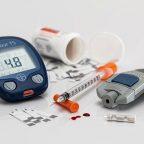
Best Glucose Monitors and Meters
Did you know that you can test your blood sugars in the comfort of your home if you have diabetes? There are testing kits referred to as glucose monitor meters that are recommended for testing sugars at home. Technically, these are monitoring kits that help you follow up and determine the factors that affect your blood sugars. If the blood sugars go high or low, these kits will help you quickly determine what is causing it.
When to use the glucose monitors;
After a workout, you can use the monitor if you fall sick and when you are stressed or undergoing something that affects your diabetic level.
How often should you use the glucose monitors?
This can be determined by the type of diabetes you have, the medications you use, or your daily meal plan. Depending on these factors, your doctor will advise you on the right time and number of times you need to take the test. Still, the type of CGM system you use will determine the number of times to test.
What to consider before buying the glucose monitors and meters
It should have a high accuracy
It is good to choose a glucose monitor and meter kit with a high accuracy level. Considering this is a kit you use at home and not with a doctor around, the higher the level of accuracy it has, the better since you will be able to get good results to determine your sugar levels.
Are the monitor and meters insured?
There are different types of glucose monitors and meters on the market, and medical insurance companies usually have a preference when choosing the kits to ensure. So, if you don’t want to spend a lot of money to acquire this kit, consult with your insurance company on the insured kits under your cover.
Accuracy?
Accuracy goes hand in hand with consistency when choosing a glucose monitor and meters kit. Ensure the kit that you choose is consistent when giving your health results.
Ease of use
A kit with easy-to-use features such as beeping alarms when results are ready, or other notification features is a good option.
Durable
The last thing you need is to spend a lot of money investing in a glucose monitor and meter kit that doesn’t last you long. So, checkout for durability, and if possible, choose a kit that comes with a warranty.
Portable kit
A kit you can carry to use from different areas is convenient and a great choice. Hence, consider getting a movable model.
The Top Best Glucose Monitor and Meters Review
- Care Touch Glucose Monitor System
This glucose monitoring system is designed for beginners since it is easy to use and has all parts like the meter, 100 lancets, test strips, and a lancing device. It is super quick since it gives results within 5 minutes, and you can do the test yourself since removing the finger strips is easy. It is powered by a rechargeable battery and is compact, so you can carry it to use from anywhere.
| PROS | CONS |
|---|---|
| · It is ideal for beginners · It is portable · An affordable system · Gives quick results | · A lot of customers complain the strips are small and hard to handle |
- Freestyle Libre
Although this glucose monitor and meters kit was launched in 2017, it has gained massive sales in the USA due to its ease and comfortable use. This is actually the glucose monitor that I use, with a high level of satisfaction.
The FreeStyle Libra does not use blood to monitor blood sugar levels but uses interstitial fluids. It is easy to use as you are supposed to wear a sensor on your arms and then wave the monitor above the sensor so it can read your blood glucose levels. However, it is recommended that you change the monitor every 14 days. Also, note that this glucose system monitor comes in two types that may give varying result modes.
A quick side note: My insurance carrier no longer pays for this unit because I am no longer on insulin or any types of medication. The manufacturer does have a voucher program that pays for 50% of the sensor costs. Ask your physician or endocrinologist for details.
| PROS | CONS |
|---|---|
| · Easy and comfortable to use since it does not have finger pricks · Installation is a breeze and causes no discomfort · It can be used many times a day | · Does not have consistency all the time · The sensors may not work if bumped or damaged · The sensor may cause skin irritation · Takes one hour to start measuring results |
- Dexcom G6
This is the most accurate sensor system used for glucose monitoring and testing at home. I have a few friends using this system and they seem sell-satisfied.
It is easy to use since you integrate it with your smart devices to give quick results. The Dexcom G6 gives quick results in 5 minutes, depending on the app you download on the device. It works like the Freestyle Libre; only the Dexcom sensor is worn at the abdomen. Also, note that you can use this system with other diabetes testing kits like the insulin pump.
| PROS | CONS |
|---|---|
| · Gives consistent and accurate results · Quick readings within 5 minutes · Compatible with an insulin pump | · Sensor requires constant changing every 10 days |
- Eversense
This is a more advanced glucose monitor system that needs a doctor’s help since the sensory is supposed to be implanted under the skin for accurate testing.
A few people I know are excited about this particular monitor, although it’s too early for a personal endorsement.
The system measures the interstitial fluids on the upper part of the arm, and you can wear it for up to 90 days. It is compatible with smart devices such that immediately after your implant, it will send your body glucose results to the app within 5 minutes. It has notification features whereby it vibrates when the glucose level alters.
| PROS | CONS |
|---|---|
| · The sensor lasts for 90 days before changing · Gives quick reading · Has low vibration mode for privacy | · It can only be applied and changed by a doctor · Can give false alarms when exposed to sunlight |
- Guardian Connect system
| PROS | CONS |
|---|---|
| · Works with both iOS and Android devices · Gives results every 5 minutes | · The sensor needs constant changing · Not recommendable for 14 years olds |
- Rite Aid TrueMetrix Meter
If you are looking for an easy-to-use CGM system, this model is an excellent option. It has four alarm setting options and gives quick readings within 4 seconds of connecting to your body. It has ample storage space, which allows you to keep up to 500 glucose level results. You don’t need a prescription to use this CGM, which is available at different outlets. But, note that the package does not have the finger strips or lance; hence, you have to buy them separately.
| PROS | CONS |
|---|---|
| · It is easy to sue · Quite affordable · Four programmable alarm settings | · Require a constant daily testing · Does not come with all testing accessories |
Summary
The review has two types of glucose monitor and test devices, whereby some require blood or under skin implantation, and others require connecting to the body for testing. So, if you need less pain or a system that does not require you to draw blood from your body, consider buying Freestyle Libre or Guardian connect. It is good to check with your insurance company first to see if they cover the use of your preferred CGM system and consider your budget, too, so you don’t end up draining your savings.
Buy from a reputable online outlet to avoid buying a counterfeit system that will not serve you right and for long. You can also consult with your doctor regarding the right glucose monitor and test system for your type of diabetes.
